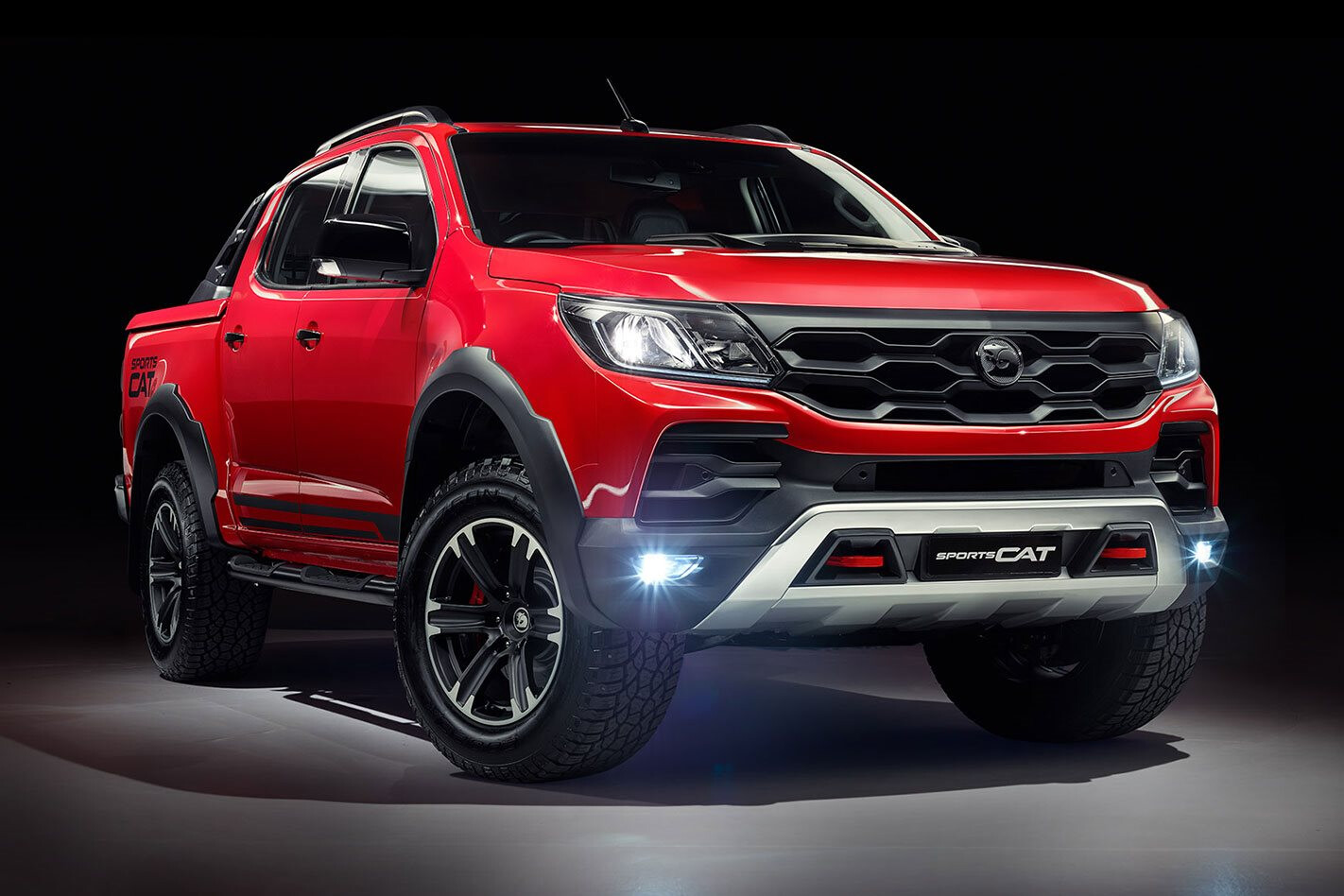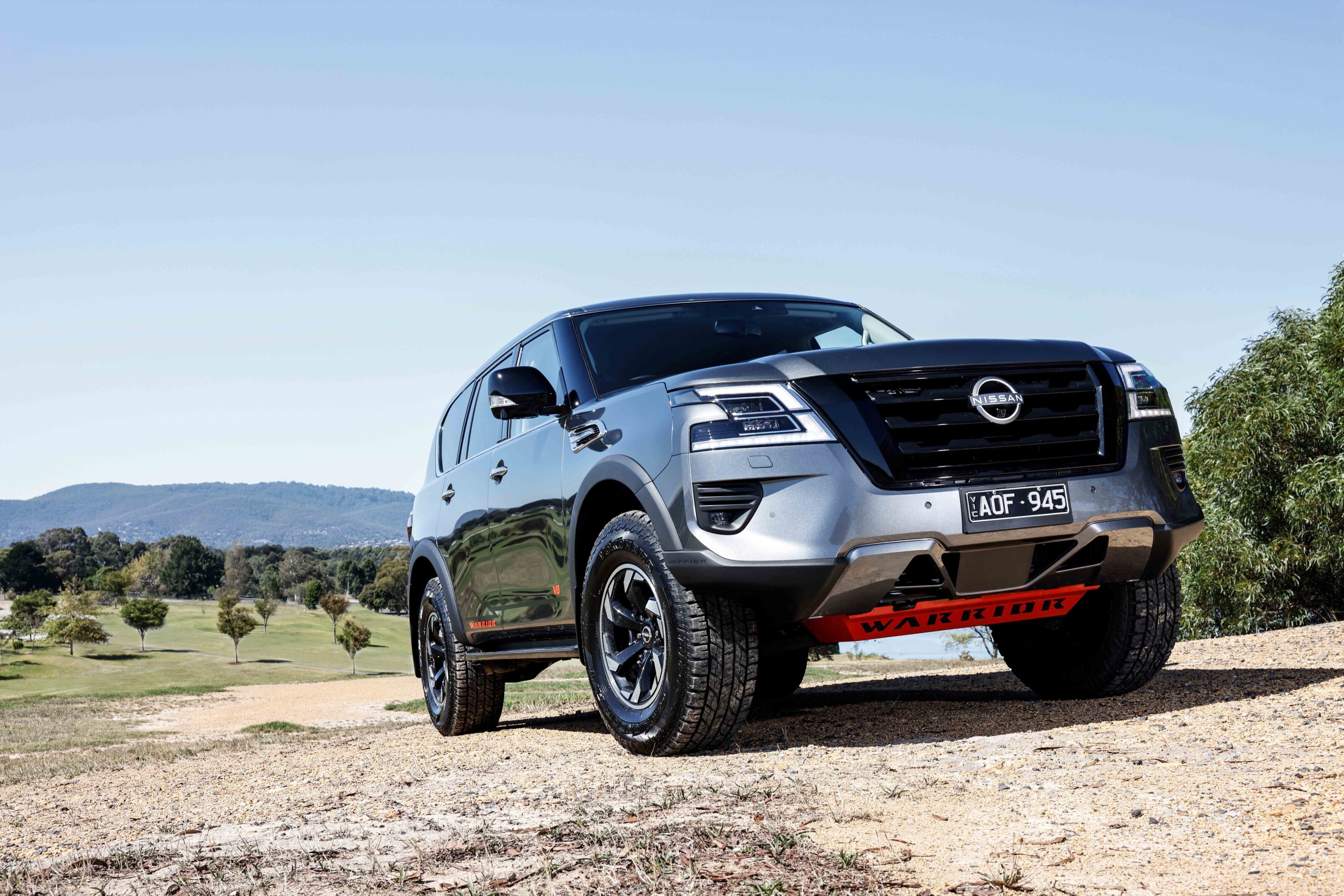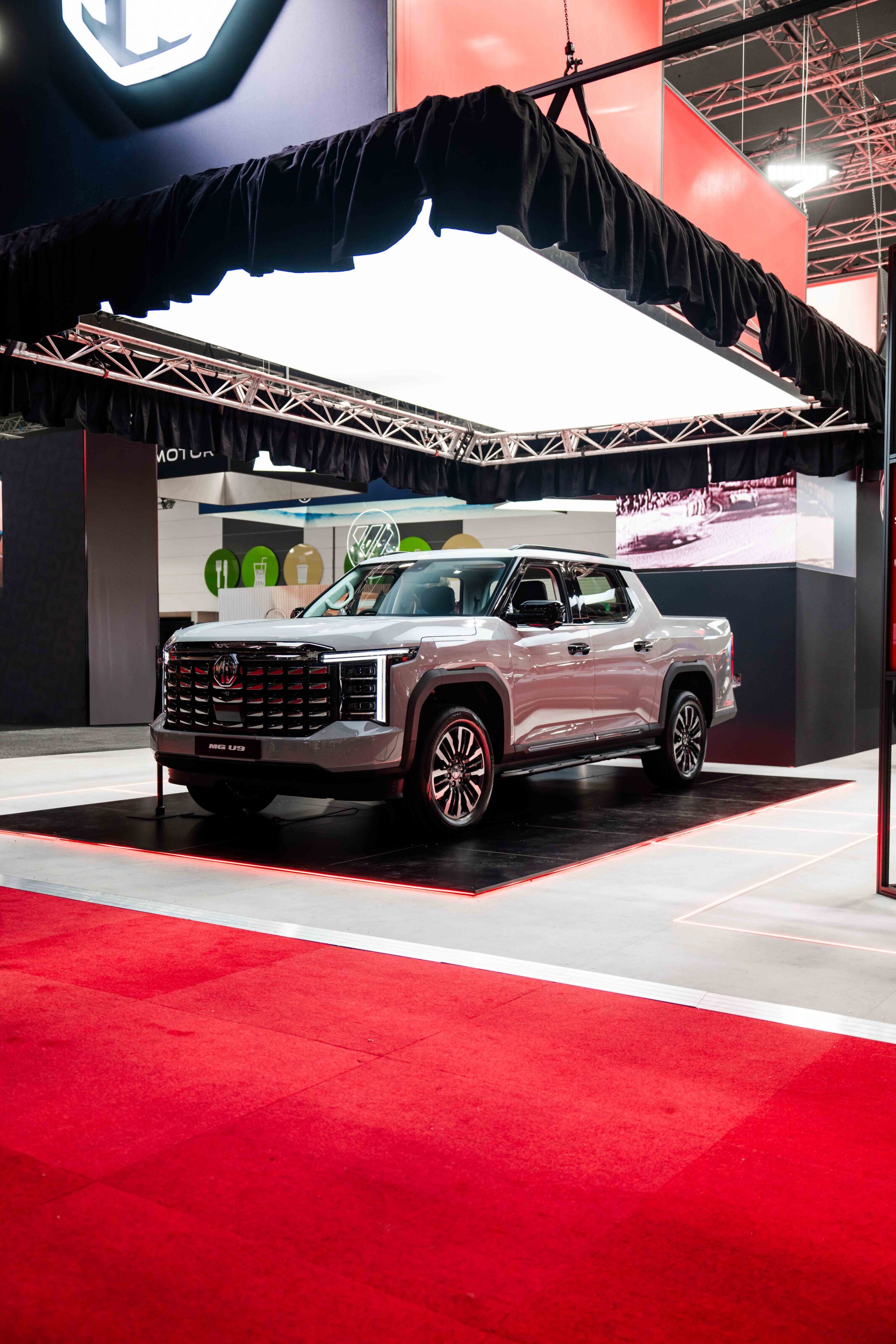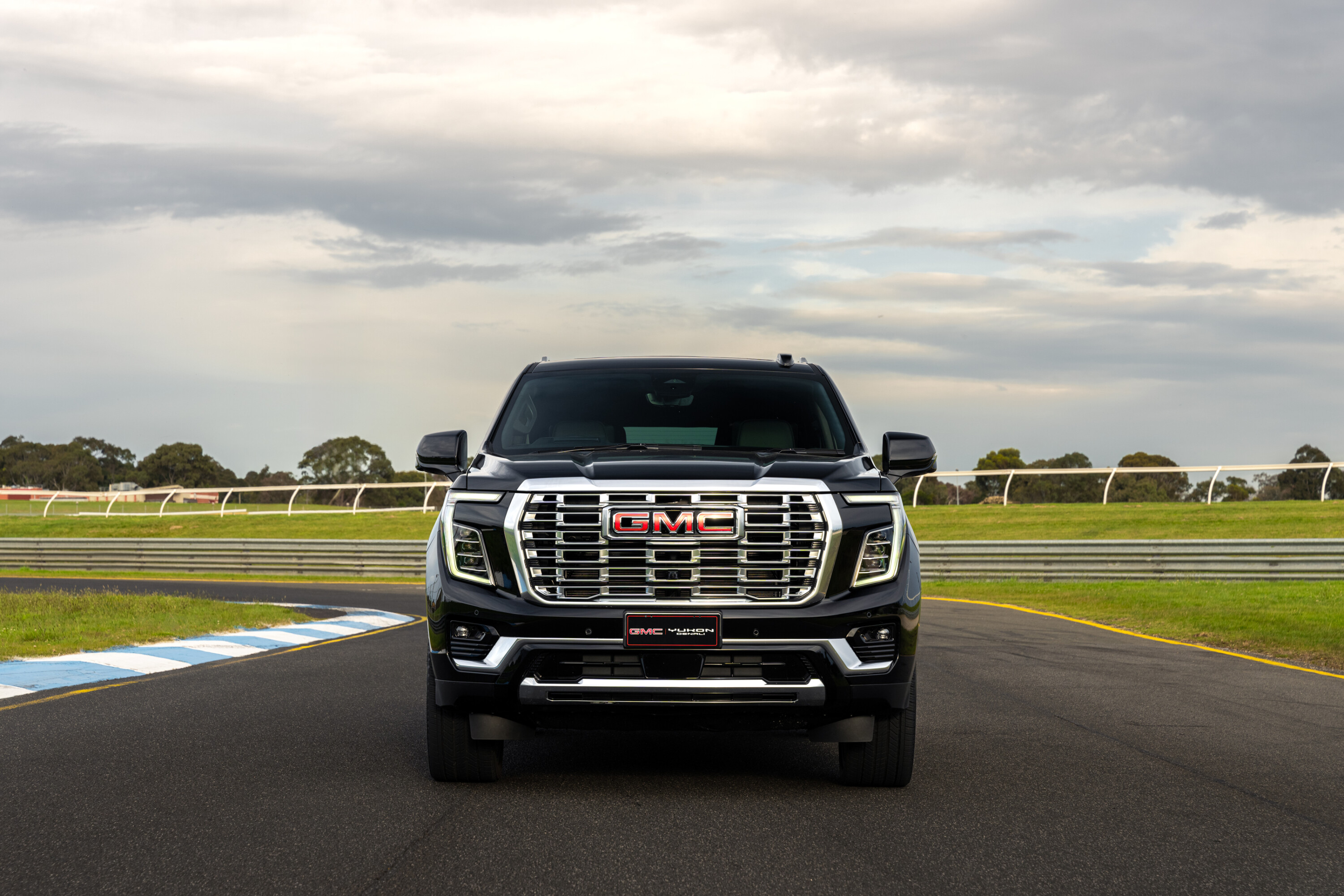IT’S THE HSV with bush genes. In reality, though, the HSV SportsCat is more Holden Colorado than any go-fast special cooked up in the Clayton skunkworks best known for its big-power V8s.
The diesel engine is unchanged, dishing out the same 147kW and 500Nm (or 440Nm for the manual). Grunty by dual-cab standards, but un-HSV. There’s even the Colorado name plastered across its modified tailgate, an indication of the closer ties with Holden, which can no longer lean on local manufacturing.
The SportsCat is indicative of a new HSV, one that must survive without the lure of Commodores infused with V8 Supercar thinking. Territory where HSV has never been, then, or, more correctly, territory it has never conquered.
The Avalanche of 2003 transplanted that big power, Commodore-based thinking to the light-duty off-roader that was the Holden Adventra. Earlier, in 1993, HSV stamped its logo and some styling tweaks on a Holden Jackaroo, ladder frame chassis and all. The SportsCat is closer in concept to that Jackaroo, albeit with more effort in tuning the chassis for improvements. And this time the SportsCat is the main game, not a sideshow; post-GTSR and W1 – the supercharged send-offs to the Aussie Commodore – it’s the only model in the once thriving HSV showroom.
That’s significant, because HSV is investing heavily in tipping its engineering hat to the off-road market, keen to show it can inject measurable improvements. There’s even a subtly revised HSV logo.
Key to its appeal is the chunkier design and higher ride height, something that boosts clearance from 215mm to 251mm. The approach and departure angles are also up 2 degrees each, to 32 and 24 degrees respectively. It comes courtesy of a 25mm lift of the front springs (the rear leafs are unchanged) and Cooper Zeon LTZ Pro tyres, the latter adding 20mm all ’round.
Specifically engineered for the new HSV, the Coopers are a light-truck, all-terrain construction aimed at beefing up look and ability. Combined with a 30mm wider track they also require the fitment of wheel-arch extensions to prevent them spraying water or mud. Despite their chunky tread pattern, our brief smooth-road experience suggested noise isn’t a major issue. Dial on some lock, though, and there’s a gradual yelp like a Labrador that’s being dragged by its tail. Drive it more like a dual-cab and the Colorado SportsCat plays ball nicely and is surprisingly well-behaved.
There are two models within the SportsCat line-up: the regular SportsCat and the SportsCat+, the latter adding a more aggressive front bumper, a stylised plastic sail plane to the blackened sports bar, a non-functional bonnet bulge, as well as four-piston AP Racing front brakes and a rear stabiliser bar. It’s that stabiliser bar that makes for a more planted ride. Combined with stiffer front springs and more aggressive damping, it more competently counters body roll. Sure, the outside of the car will lean slightly, but even with decent pace in a bend it’s surprisingly well tamed and deals well with brisk changes of direction.
With a larger master cylinder and the four-piston AP fronts, the brake pedal is firmer and better modulated; yet with drums on the rear and almost 2.3 tonnes to arrest (the SportsCat is about 100kg heavier than the Colorado) it’s no sports car in the stopping department. However, for a car that’s seen a decent improvement to off-road ability, it’s a welcome change.
The SportsCat+ also gets external canisters for its shock absorbers, something that promises to make corrugations less likely to cause failure. The extra breadth and deep tread pattern of those Coopers claws into loose terrain well, while bringing a tougher construction for better puncture resistance. Plus, the additional clearance means you’re less likely to scrape the underbelly. Impressively for the SportsCat+ the rear stabiliser bar disconnects once you select low range, so articulation is not adversely affected.
Inside, the leather- and suede-trimmed dash and red-stitched steering wheel adds a sense of occasion to the otherwise plastic Colorado dash. The leather seats, too, add more lumbar, albeit without the body-hugging cushions HSVs have been known for. There are Colorado hangovers, though: no reach adjust to the steering and no smart key access or push buttons, so you have to put the key in the ignition. And, despite two flashy red tow hooks up front, there’s not a single recovery point at the rear. Don’t get stuck nosing it in…
Plus, despite the imminent arrival of auto braking systems – it’ll be standard on the Mercedes-Benz X-Class and a likely addition to the updated Ford Ranger later in 2018 – there’s only a warning system in the Colorado. So, like the Colorado, the SportsCat is not perfect. It’s also no traditional HSV, lacking the performance upgrades and track-hungry chassis set-ups the brand is known for. But the SportsCat does up the Colorado game with some worthy improvements, both on- and off-road. It’s no game-changer, but the SportsCat brings flashes of aftermarket mods with the backup of a factory warranty and proper validation engineering.
That’s nothing to be sneered at in the bush.
TAKEN CARE OF
ANY number of aftermarket suppliers can create a truck as tough as the HSV Colorado SportsCat – tougher, even. But we’re not aware of any that will hack the car’s electronics to recalibrate stability and traction controls, something HSV engineers did to the SportsCat.
The system not only accounts for the different suspension components but also the grip levels of the tyres; different traction control tunes, for example, have been created for low and high range. Plus, for the SportsCat+, there are brake upgrades, which have resulted in recalibrated ABS tunes.
That it all that arrives with full ADR (Australian Design Rule) approval and factory warranty backup makes for peace of mind that it’s been thoroughly tested and validated for the vehicle.





